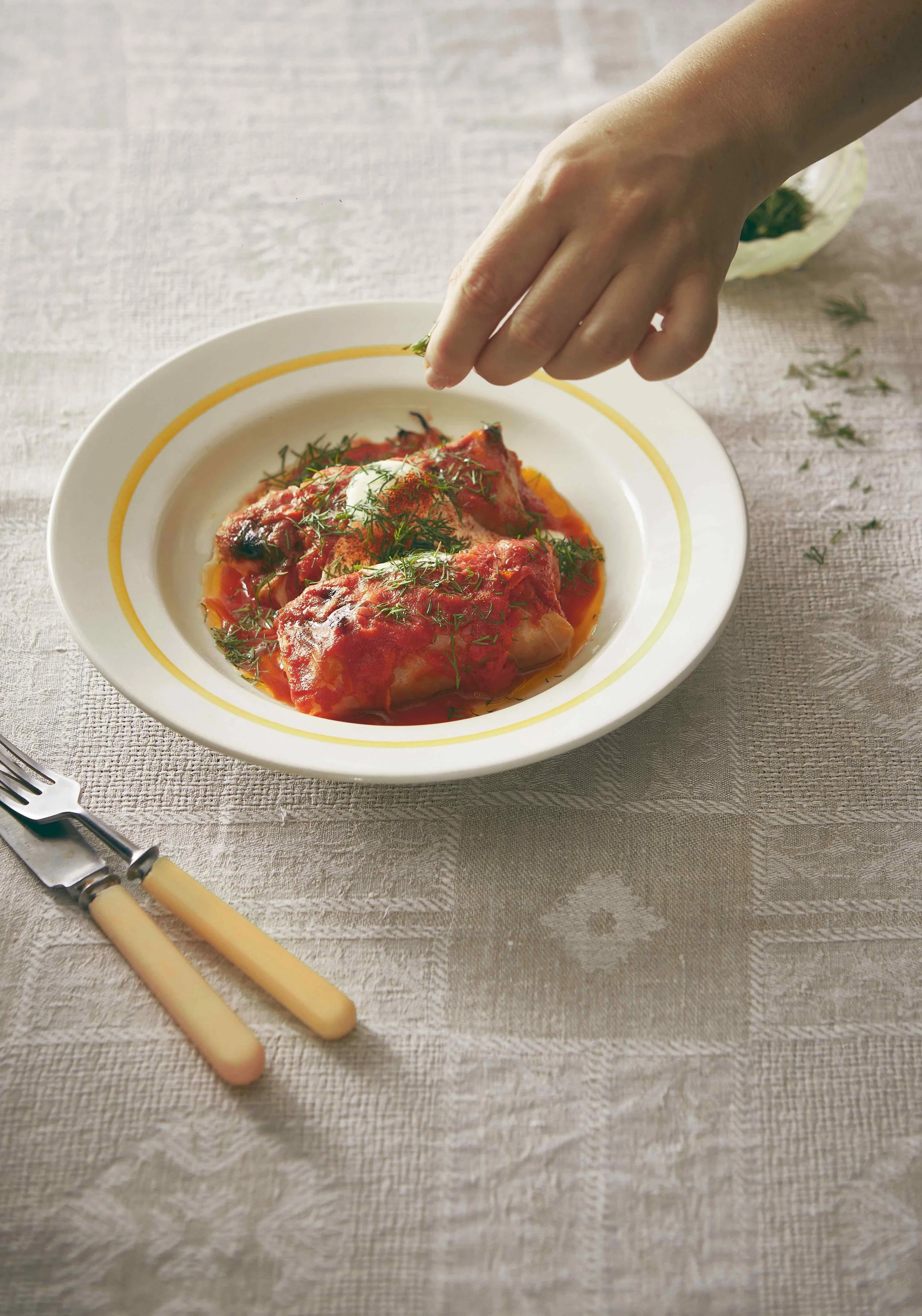Red-wine braised beef with mash and salsa verde
Braising is one of the cornerstone techniques of cooking and once you understand how it works, you can go forth and apply the same, basic method to any suited ingredient, or cut of meat, with confidence.
Braising is a wet method of cooking, and meat-wise, it’s suited to cuts that you’d generally never pan fry or grill because they’d be inedible. Tougher cuts of meat, such as chuck or cheeks, contain connective tissues that only break down in wet conditions over low heat and with time. There are cuts that are dual-purpose such as shoulder (which you can also roast), or shanks and chicken thighs (also roastable). You can also pot-roast, say, a whole bird, lamb neck or shoulder – pot-roasting is braising-adjacent and we’ll get to that at some point.
A meaty braise like this beef one generally unfolds like this; you trim the meat of excess fat if needed, then cut it into manageable pieces (if required; here, it’s not) and optionally dust it in plain flour. Next, you brown it off in oil or fat, plus brown or sweat-off base-material vegetables such as onion, mushrooms, carrot and/or celery. Maybe with tomato paste, garlic and perhaps some hard herbs thrown in too (rosemary. bay or thyme are perfect). The meat and veg mixture go into a casserole or pot, the pan(s) you used to brown everything off is/are deglazed with wine, stock or water, that liquid goes into the casserole with enough stock to just cover everything (you could heave in a can of tomatoes too or some passata), then you bring it to a simmer. Everything gets cooked, covered, and over a low heat, so it just murmurs away, for 1.5-2 hours to however long it bloody well takes for tenderness to set in.
Braises are pretty hard to stuff up although some leaner cuts of braising meats, like topside, can cook to dryness if they simmer for too long so overcooking is certainly achievable. You could also take a braise to your slow cooker if you have one.
Serves 6
3 tbsp olive oil, approximately
400g shallots, peeled, leaving root end intact
plain flour, for dusting
1.5kg beef short ribs
3 tbsp tomato paste
2-3 sprigs thyme
2 fresh bay leaf
500ml (2 cups) red wine
500ml (2 cups) beef stock, approximately
4 tsp balsamic vinegar, or to taste
Potato mash or polenta, to serve
Salsa verde
1 hard-boiled egg yolk
1⅓ cups firmly packed curly-leaf parsley (about 2 bunches), stems removed, washed and patted dry
2½ tbsp drained capers
4-5 anchovy fillets
2½ teaspoons grain mustard
¼ cup (about 15g) chopped onion
2 cloves garlic, coarsely chopped
2½ tbsp chopped cornichons, or gherkins
juice of a lemon, or to taste
80ml (⅓ cup) extra virgin olive oil, approximately
Heat half the olive oil in a frying pan over medium heat, add the shallots and cook, shaking the pan often, for 8 minutes or until browned all over and softened. Remove to a bowl and set aside.
Meanwhile, dust the ribs lightly in flour. Heat the remaining oil in a very large, deep frying pan or casserole over medium-high heat. Add the ribs, season with salt, then cook, turning occasionally, for 10 minutes or until well browned all over. Remove to a large bowl. Add the tomato paste, stir for 1 minute to cook it out a little, then add the thyme, bay leaves and wine. Bring the wine to the boil, then cook for 3 minutes or until it has reduced slightly, stirring the pan to dislodge any bits stuck to the base.
Return the ribs to the pan, add the stock, then bring the mixture to a simmer. Cover the pan, reduce the heat to medium-low, then cook for 1 hour 10 minutes or until the beef is starting to become tender. Add the shallots, then cook, covered, for another 20-30 minutes until the beef is very tender and nearly falling off the bone and the shallots are very soft. Using a slotted spoon and taking care not to break the beef up, remove the beef and shallots to a bowl. Bring the sauce to a simmer, skimming the fat from the surface, then cook for 6 minutes or until it has reduced to a light coating consistency.
For the salsa verde, combine all the ingredients in a food processor, then process until a coarse paste forms, adding extra olive oil, as needed. Taste, then season to taste with sea salt and freshly ground black pepper, adding a little extra lemon juice, to taste.
Serve the ribs with some of the sauce, mash or polenta, and the salsa verde drizzled over.












